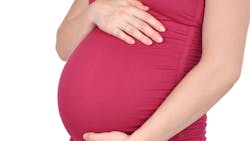Study sheds new perspective on COVID-19's impact on fertility rates
Experts have found that at the start of the COVID-19 outbreak in early 2020, Americans chose not to become pregnant as they grappled with stay-at-home restrictions, anxiety, and economic hardship. Now, a new study led by researchers at NYU Grossman School of Medicine shows that some states actually experienced steeper decreases in fertility than others.
The findings revealed that 9 months after the pandemic began, there were 18 fewer births a month per 100,000 women of reproductive age across the United States compared with the year before. However, after the second wave in 2021, fertility fell by roughly 9 monthly births per 100,000 women, which was similar to the rate at which national fertility had been decreasing before the pandemic.
“Our findings suggest that while the overall national fertility rate rebounded remarkably quickly after the initial COVID-19 wave, the initial declines by state were as polarized as the country as a whole,” said study co-lead author Sarah Adelman, MPH, a research associate in the Department of Pediatrics at NYU Langone Health.
According to the state-specific results, New York experienced a massive fertility rate decline following the first wave, plunging from a pre-pandemic annual trend of 4 fewer monthly births per 100,000 women of reproductive age to roughly 76 fewer monthly births per 100,000 women. Delaware saw about 64 fewer monthly births for the same number of women and Maryland about 55 fewer monthly births per 100,000 women. Like they had been in New York, annual fertility rate decreases in these states were in the single digits before the coronavirus outbreak.
By contrast, following the first wave, Idaho, Montana, and Utah experienced a boost of up to 56 additional births each month per 100,000 women of reproductive age. This is despite the fact that fertility rates in these areas had also been trending downward in the years leading up to the pandemic.
Adelman says that while previous research has documented national fertility-rate declines following COVID-19, the new study, published online April 11 in the journal Human Reproduction, goes a step further, comparing changes among individual states and examining factors that may account for the different rates.
For the research, the study team analyzed data from the U.S. Centers for Disease Control and Prevention Bureau of Vital Statistics, the 2020 U.S. Census, and the University of Virginia 2021 population estimates to calculate fertility rate trends after each COVID-19 wave. The team then examined whether coronavirus case rates or other factors were the main drivers of fertility rate changes.
Contrary to their expectation, the severity of the coronavirus wave in each state appeared to have had little bearing on changes in that state’s fertility rate, the researchers say. Rather, demographic factors like racial composition and economic factors, including greater income inequality, higher percentage of college-degree earners, and large drops in employment at the start of the pandemic, negatively impacted rates.
The research team then examined states’ political leaning and a measure called the social distancing index (SDI), which tracked changes in people’s mobility following the first wave. They found that states with stronger social distancing responses and that were politically liberal had larger fertility rate declines following the first wave of the pandemic. When plotted on a graph, politically liberal places such as New York and the District of Columbia had the highest SDIs and lowest fertility rates, while more conservative states such as Idaho and Montana had the reverse.
